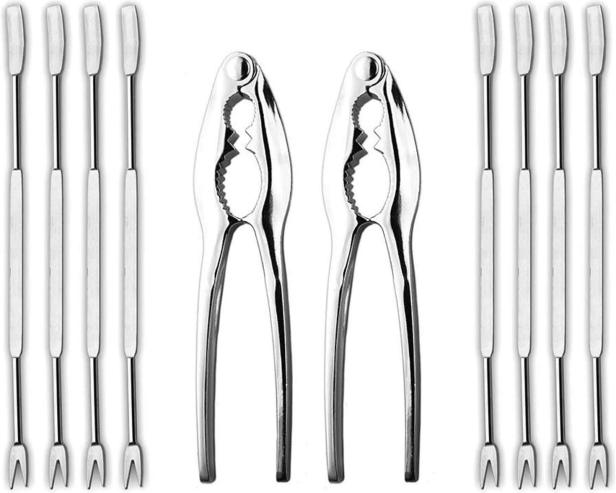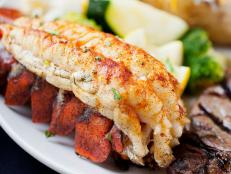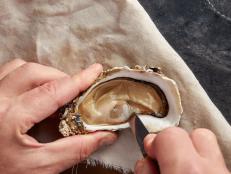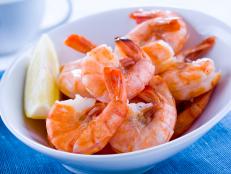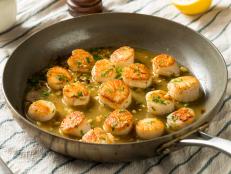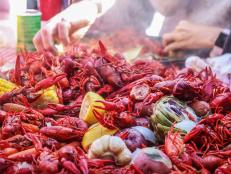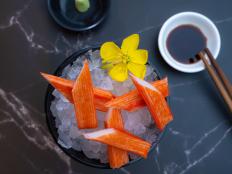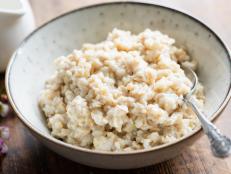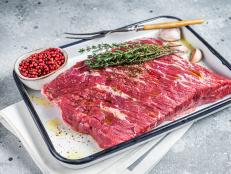How to Cook Lobster
Here, the two easiest ways to cook whole lobsters.
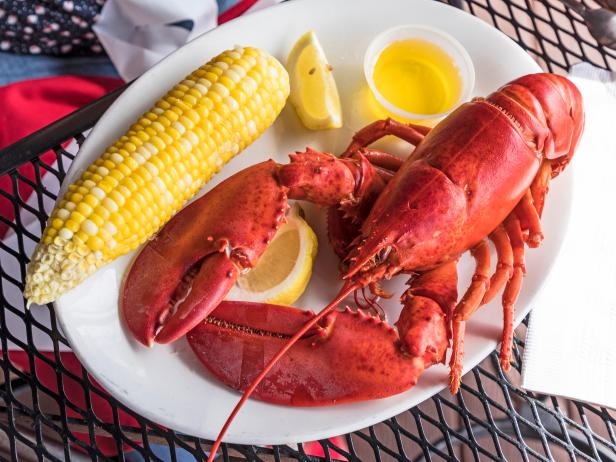
travelview/Getty Images
By Fraya Berg for Food Network Kitchen
Fraya is a chef and a contributing writer at Food Network.
How to Buy Lobster
- Fresh versus Frozen: Live lobsters or frozen lobster tails are both good options. If you're buying a live lobster, look for one that's spunky, moves quickly in its tank and has large antennae. Its tail should curl up when lifted from the tank. Frozen lobster tails are a good option if you live somewhere where you can't buy live lobster, and they can be easily shipped across the country.
- Size: Lobsters can be harvested from the sea at 1 pound or more; anything less must be returned to the water. The lobster you find at the markets are typically 1 1/2 pounds. Sometimes you might see larger lobsters for sale, but larger doesn't always mean better: it's harder to cook them evenly, and many find their meat to be tougher.
- Hard Shell vs. Soft Shell: Lobsters shed their shells the same way snakes shed their skin as they grow. When a lobster sheds its hard shell, it's left with a new, soft shell with room to grow. Soft shell lobsters may be less expensive, but there's typically less meat inside, and they won't ship well, so you'll typically only find them near where they're caught. Hard shell lobsters have meat that's more firmly packed into the shell.
- Where to Buy Lobster: If you live on the East coast of the U.S., chances are your local fish store sells live lobster. If not, opt for frozen lobster tails, or buy live lobsters from a reputable source online that'll ship them to you carefully.
How to Store Live Lobsters
Store live lobsters at the bottom of your refrigerator in a shallow container with a damp towel or wet newspaper over them. They'll last this way for up to 2 days. Do not take the rubber bands off the claws until after they are cooked: the lobsters can hurt each other and you.
How to Prep Lobster
If you choose to dispatch them before cooking, put a lobster on a towel-covered cutting board and place the tip of a chef’s knife at the cross marks at the back of the head. Cut down through the head straight between the eyes.
At this point, if you want the tail to be straight, slide a thin wooden skewer through the tail just below the shell.
How to Boil Lobster
Lobster needs to be boiled in a large amount of water. For 2 lobsters, a 4- or 5-quart pot is big enough. If you plan to boil 5 or 6, you’ll need a 5-gallon pot. If you don’t have a 5-gallon pot, you should cook the lobsters in batches, 2 at a time. Directions are as follows.
- Bring the water to a boil. Bring a heavily salted pot of water to a boil.
- Add the lobsters. Add the lobsters and cover the pot.
- Start timing. When water comes back to a boil (you’ll hear it), start your timer.
- Boil the lobsters. Boil lobsters for time indicated in chart below (see the section How Long to Boil Lobster), remove the lobster with tongs and transfer them to a bowl.
- Drain the lobsters. Drain the lobsters. Cooked lobster can have residual water in the shell that’ll make a mess on the dinner plate. Make a small cut with a paring knife between the lobster’s eyes and hold the lobster over the sink to drain. Dry off the lobster.
How Long to Boil Lobster
The boiling time depends on the weight of the individual lobster. These boiling times err on the side of slightly less time than other sites might suggest, because it’s always better to ever so slightly undercook – they’ll come up to temperature as they drain. A lobster that’s overcooked by even a minute will be rubbery and tough.
1-pound lobster: boil 5-6 minutes
1 1/4-pound lobster: boil 7-8 minutes
1 1/2-pound lobster: boil 8-9 minutes
2-pound lobster: boil 10-12 minutes
3-pound lobster: boil 12-14 minutes
How to Steam Lobster
Steaming lobsters is the preferred way to cook whole, live lobsters for a few reasons: you’re less likely to overcook lobsters when steaming, the entire cook time is shorter and the process of cooking and removing the lobsters from the pot is a lot easier.
Get a pot large enough to hold your lobsters. For 2 lobsters, a 4- or 5-quart pot is big enough. If you plan to boil 5 or 6, you’ll need a 5-gallon pot. If you don’t have a 5-gallon pot, you should cook the lobsters in batches, 2 at a time. Directions are as follows.
- Bring a small amount of water to a boil. Fill pot with 2 inches of heavily salted water and bring it to a boil.
- Add the lobsters. Add lobsters headfirst and cover pot.
- Start the timer. When the water comes back to a boil, start your timer.
- Steam lobsters for time indicated in chart below (see the section How Long to Steam Lobster), remove with tongs to a bowl.
- Drain the lobsters. Cooked lobster can have residual water in the shell that’ll make a mess on the dinner plate. Make a small cut with a paring knife between the lobster’s eyes and hold the lobster over the sink to drain. Dry off the lobster.
How Long to Steam Lobster
1-1 1/4-pound lobster: steam 8-9 minutes
1 1/2-pound lobster: steam 9-11 minutes
2-pound lobster: steam 11-12 minutes
3-pound lobster: steam 12-14 minutes
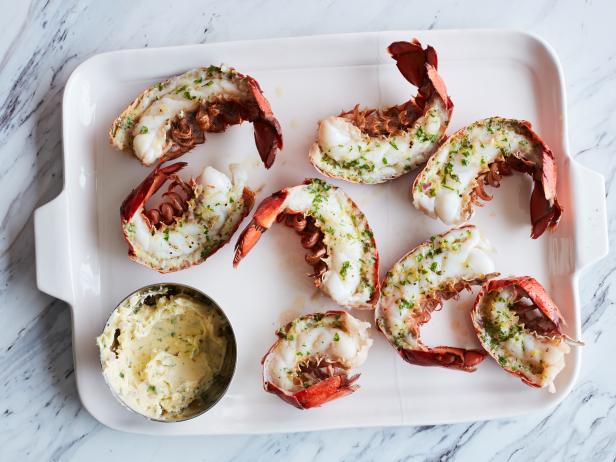
Matt Armendariz
How to Cook Lobster Tails
Our test kitchen tried cooking lobster tails by steaming, baking, broiling and grilling, and settled on broiling as the best go-to method. The steps to cook Perfect Lobster Tails are easy:
- Heat the broiler. Heat your broiler to high. Put a cooling rack in a half sheet pan.
- Halve the tails. Cut the tails in half lengthwise and place on the rack cut side up.
- Make a compound butter. Make a compound butter with herbs, lemon zest and shallots; spread 2 teaspoons on each half lobster tail.
- Broil the lobsters. Broil until the lobster meat is white and opaque and shell is red, about 4 minutes.
- Serve the lobsters with compound butter. Top with more compound butter and serve.
For info on how to cook frozen lobster tails all four ways, check out How to Cook Frozen Lobster Tails.
How to Tell When a Lobster Is Cooked
The best way to tell if lobster is completely cooked is the same way you test doneness with steak: with an instant-read thermometer. Lobster is cooked when it reaches 135 to 140 degrees F. Insert the thermometer into the thickest part of the tail (through the underside) to check.
In addition, lobster meat will be white when fully cooked. You can separate the tail from the body and check: if there is lobster meat that is translucent, it needs to be cooked longer. You can put the lobster back in the pot and cook it for another few minutes.
How to Serve Lobster
Ask anyone in Maine how to serve lobster and you might get a look that says “Is there more than one way?” And that way is with drawn butter, deep yellow melted butter with the milk solids and water removed. Lobster is classically served with French fries as a side, or sometimes boiled corn and boiled potatoes.
Whole lobsters are typically served with crackers and forks – more on how to use them in our “How to Eat Lobster” section below.
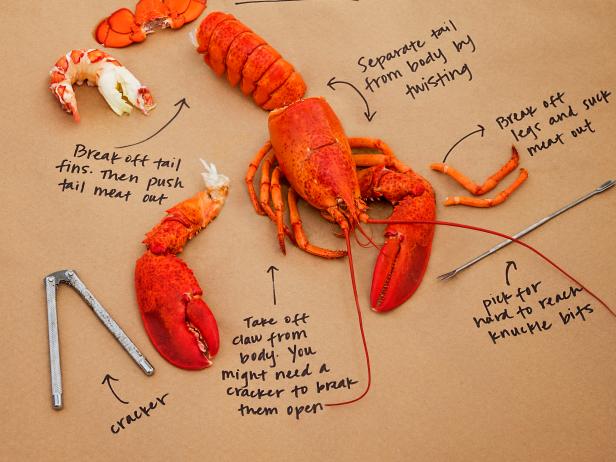
Daniel Grill/Getty Images
How to Eat Lobster
When serving whole lobster, we like to crack the claws in advance to make the job of eating them a little easier. To do so, place a lobster on the cutting board and whack each claw with a mallet (a meat tenderizer will work well). Be careful: the claws can spatter.
Once you’ve cracked the claw shell, there isn’t a set order to which lobster part to eat first. Follow our steps below, using seafood crackers and forks to help with the job.
- Claws: Pull the big front legs with claws off the body. Wiggle the smaller part of the claw to separate it; if the meat sticks inside, use a skewer to poke it out. Crack the large part of the claw with your cracker. Pull the claw out of the shell.
- Knuckles: Use the crab cracker to crack the leg pieces attached to the claw. Crack each piece into two pieces at the joint, using your cracker. Use your seafood fork to get the little morsel out of the knuckle: it is the single tastiest bite in a lobster.
- Tail: Using your hands, pull the tail off the body. Place the tail shell-side down on your plate. Using the cracker or your hands, squeeze the tail to crack the thin underside of the shell. If you choose to use your hands, pull on both sides of the shell to crack it open. With the underside facing you, spread the tail open to expose the tail meat, which you should gently pull out from the tail. Ideally, the bits of meat at the end of the tail will tug free from the shell too. Rinse the lobster tail under running water if there is any green tomalley (The Maine CDC advises that it should not be eaten as saltwater contaminants accumulate in the liver).
- Legs: Pull them off and squeeze them between your teeth to force the tiny bit of meat from each one.
Lobster Roll Recipes
Making them at home means you can get three for the price of one from a lobster shack. They’re simple enough that you can prep all the ingredients in the time it takes to cook the lobster.

If you prefer a lobster roll with a mayo dressing, this is your go-to.
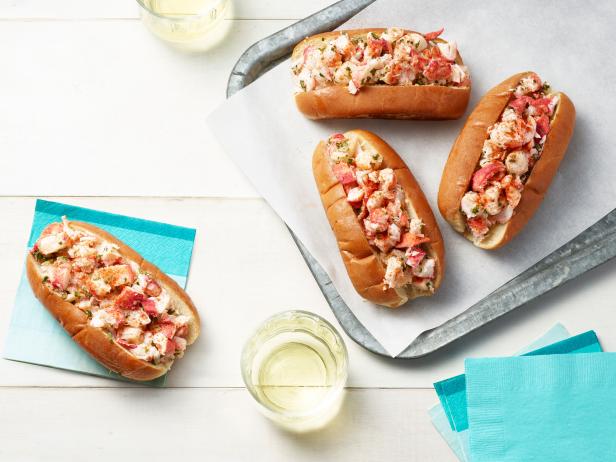
You’ll toss lobster chunks in warm butter, chives and tarragon – hmm.
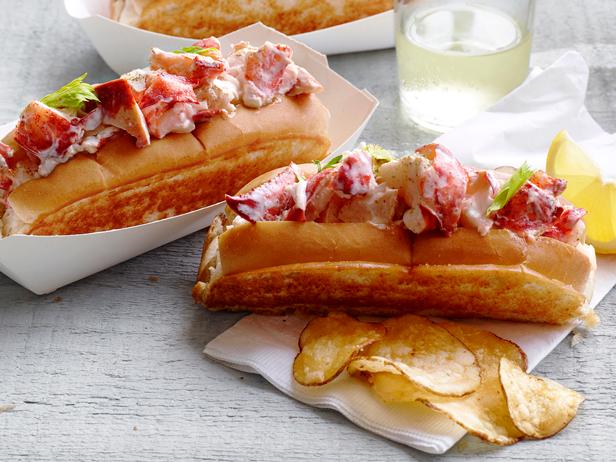
Con Poulos
This lobster roll recipe is for anyone who can’t decide if they want the lobster with butter or mayonnaise: it has both.
Lobster Recipes

Lobster and corn have always been a marvelous pair; throw in some butter, cream and tomato and you’ve got the perfect summer pasta sauce.
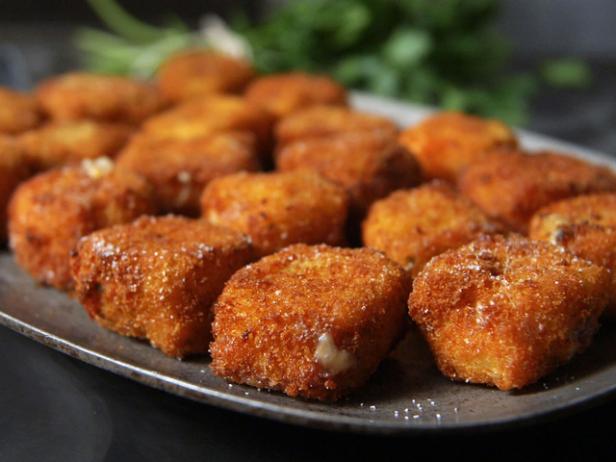
This is a serious restaurant-worthy appetizer you can make at home. The recipe can be made up to the point of freezing a day ahead of time. Take them from the fridge to the fryer and serve.
Related Links:
























